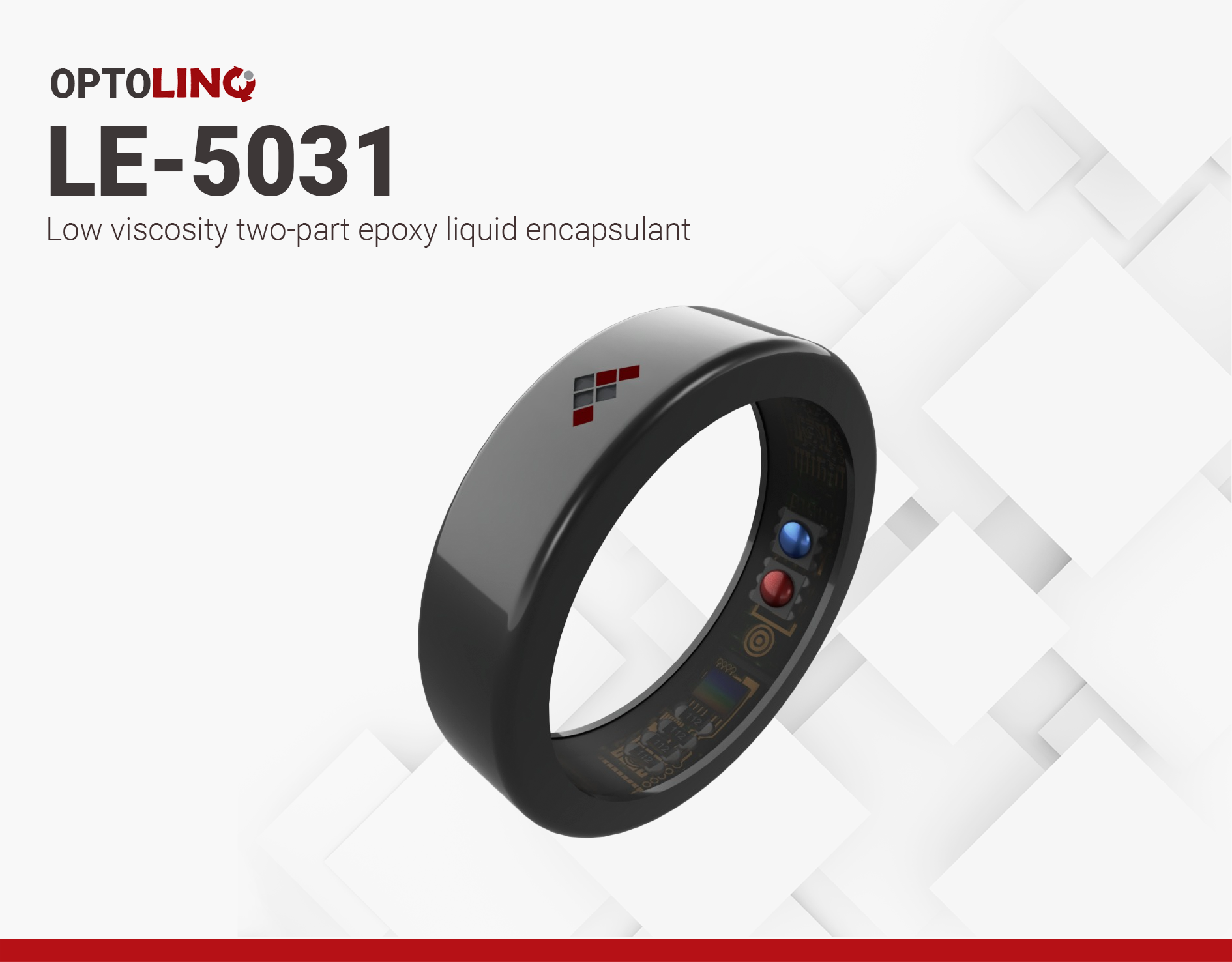OPTOLINQ LE-5031 | Two part epoxy resin
- Low viscosity
- High transparency
- Excellent solvent, aging, and thermal resistance
Product Description
OPTOLINQ LE-5031 is a low-viscosity, two-part, halogen-free epoxy resin with high transparency and a high-gloss finish. It offers robust stability in acidic and alkaline environments, good anti-aging properties, high durability even under extreme temperatures, and superior scratch and abrasion resistance. For specific color requirements, LE-5031 can be customized using color or opaque pastes.
OPTOLINQ LE-5031 is a suitable coating for metal and polymer surfaces, providing a polished finish and excellent surface integrity. It is the preferred choice for coating solar cell panels, transparent potting of electronic components for insulation and moisture-proofing, high-voltage coil potting, and room temperature potting of capacitors and transformers. LE-5031 complies with ROHS and REACH standards, offering a reliable solution for encapsulation and sealing applications.
Technical Specifications
| General Properties | |||||
| Mix Ratio Mix Ratio The amount of a constituent divided by the total amount of all other constituents in a mixture | 3:1 | ||||
| Specific Gravity Specific Gravity Specific gravity (SG) is the ratio of the density of a substance to the density of a reference substance; equivalently, it is the ratio of the mass of a substance to the mass of a reference substance for the same given volume. For liquids, the reference substance is almost always water (1), while for gases, it is air (1.18) at room temperature. Specific gravity is unitless. | 0.98 - 1.18 | ||||
| |||||
| Physical Properties | |||||
| Viscosity Viscosity Viscosity is a measurement of a fluid’s resistance to flow. Viscosity is commonly measured in centiPoise (cP). One cP is defined as the viscosity of water and all other viscosities are derived from this base. MPa is another common unit with a 1:1 conversion to cP. A product like honey would have a much higher viscosity -around 10,000 cPs- compared to water. As a result, honey would flow much slower out of a tipped glass than water would. The viscosity of a material can be decreased with an increase in temperature in order to better suit an application | 1250 mPa.s | ||||
| Chemical Properties | |||||
| Water Absorption | 0.15 % | ||||
| Mechanical Properties | |||||
| |||||
| Elongation Elongation Elongation is the process of lengthening something. It is a percentage that measures the initial, unstressed, length compared to the length of the material right before it breaks. It is commonly referred to as Ultimate Elongation or Tensile Elongation at break. | 3.6 % | ||||
| |||||
| Thermal Properties | |||||
| Flash Point Flash Point The flashpoint of a solvent is the lowest possible temperature at which it can vaporize to form an ignitable vapor. Flashpoint is often confused with “autoignition temperature”, which is the temperature at which a solvent ignites without an ignition source. | >140 °C | ||||
| |||||
Additional Information
Recommended curing conditions
Initially cure at 25 °C for 24 hours and then at 100 °C for 1 hour.
These guidelines offer recommended curing parameters. Define the exact curing parameters to align with your product specifications.
Precautions for use
- Follow the recommended mixing ratio precisely.
- Make sure to stir the mixture thoroughly. Use the mixture as soon as possible.
- When the relative humidity exceeds 85%, the solid surface can absorb moisture from the air, producing a white fog. Room temperature curing is not advised when the relative humidity is greater than 85%. Instead, consider heated curing as a recommended alternative.
- After each use, seal the container tightly to prevent moisture from infiltrating and compromising the product's quality.
Please note that the provided information is based on available data and typical conditions. For specific applications and detailed test results, refer to the actual test data and conduct appropriate certifications.
Storage and handling
Store in a ventilated, dry, and clean environment below 30 °C and 70% RH. Keep away from fire and heat sources. It is strictly forbidden to store in outdoor environments. At proper storage conditions, Part A and Part B both have a shelf life of 183 days. Shelf life can be extended by using cold storage.




